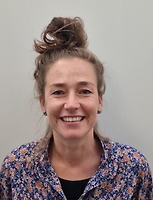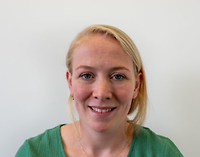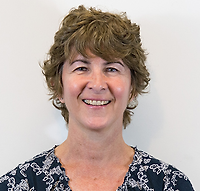Nelson Marlborough > GPs / Accident & Urgent Medical Care > Nelson Bays Primary Health >
Greenwood Health
General Practice (GP) Service
Today
Description
Our underlying core values in providing exceptional patient care are friendliness, accessibility and affordability.
We offer a wide range of services to all age groups.
Staff
Meet our team here
Emma Nikolajenko Nurse Practitioner
Doctors
-

Dr Stephan Bontekoe
General Practitioner
-

Dr James Chisnall
General Practitioner - Vocationally Registered
-

Dr Thomas Davies
General Practitioner - Vocationally Registered
-

Dr Richard Fuller
General Practitioner - Vocationally Registered
-

Dr Quirine Huijgen
General Practitioner
-

Dr Oliver Madigan
General Practitioner - Vocationally Registered
-

Dr Sadie Penfold
General Practitioner
-

Dr Colette Pienaar
General Practitioner - Vocationally Registered
-

Dr David Short
General Practitioner - Vocationally Registered
-

Dr Gusta van Zwieten
General Practitioner
-

Dr Catherine Vercammen
General Practitioner - Vocationally Registered
-

Dr Suzanne Viveen
General Practitioner - Vocationally Registered
-

Dr Tyler White
General Practitioner
Ages
Adult / Pakeke, Child / Tamariki, Older adult / Kaumātua, Youth / Rangatahi
How do I access this service?
Enrolled patients, Make an appointment, Walk in, Casual (not enrolled) patients
Enrolling new patients
Restricted enrolment
This practice is accepting some new patients to enrol, but with restrictions.
Enrollment Policy
We operate on a one-in, one-out enrollment system due to limited capacity. Patients are encouraged to join our waitlist. Priority is given to:
- Whānau (family) of enrolled patients
- Individuals who do not have an enrolled practice in the area
Fees
Enrolled Patient Fees
| Age Range | Without CSC | With CSC |
|---|---|---|
| Under 6 years | Free | Free |
| 6 to 13 years | Free | Free |
| 14 to 17 years | $44.00 | $13.50 |
| 18 to 24 years | $58.00 | $19.50 |
| 25 to 44 years | $58.00 | $20.00 |
| 45 to 64 years | $58.00 | $20.00 |
| 65+ years | $58.00 | $19.50 |
Fees and Charges Categorisation
Fees apply
Hours
| Mon – Fri | 8:30 AM – 5:00 PM |
|---|
For urgent (not emergency) care after hours a healthcare provider will be contactable by calling 03 528 8866.
Greenwood Health, together with The Doctors Motueka, provides expert acute and urgent care services 7 days a week, 365 days a year to our community and visitors. Our dedicated urgent care team is highly skilled in delivering high-quality acute care within Motueka’s rural health setting.
Who We Help
Both enrolled patients and visitors can access our urgent care services for medical issues you would typically see your GP for, as well as accidents and injuries such as sprains, cuts, and other minor trauma. Our trained nurses triage all patients based on clinical need to ensure the most urgent cases are seen first.
How to Access Care
At any time, day or night, please call the practice on 03 528 8866 to discuss your urgent care needs. If you require care outside of business hours, a registered nurse will assess your situation and provide guidance, which may include:
- Self-care advice
- GP/NP consultation
- Clinic review at the next available appointment
- Urgent GP/NP call-out
- Ambulance support if required
Due to our joint urgent care partnership, after-hours care may be provided at The Doctors Motueka, Greenwood Health, or via a virtual doctor if after 11 PM.
Important Notes
- After-hours fees apply for urgent care services.
- For medical emergencies, please call 111 immediately
Public Holidays: Closed Nelson Anniversary (2 Feb), Waitangi Day (6 Feb), Good Friday (3 Apr), Easter Sunday (5 Apr), Easter Monday (6 Apr), ANZAC Day (observed) (27 Apr), King's Birthday (1 Jun), Matariki (10 Jul), Labour Day (26 Oct).
Christmas: Open 22 Dec — 24 Dec. Closed 25 Dec — 28 Dec. Open 29 Dec — 31 Dec. Closed 1 Jan — 4 Jan. Open 5 Jan — 9 Jan.
Languages Spoken
Dutch, English, Spanish
Services Provided
All women and people with a cervix aged 25 – 69 who have ever had intimate skin-to-skin contact or been sexually active should have regular cervical screening. This includes women who have been immunised against HPV. Together, regular screening and HPV immunisation provide the best protection against cervical cancer. There are now more options for how you have cervical screening done: a simple vaginal swab test for HPV, either done yourself or with help from a healthcare professional a cervical sample taken by a healthcare professional (used to be known as a smear test). Talk with your healthcare provider to decide which option is best for you. If HPV is found, you may need to have a follow-up test or be referred directly for colposcopy. If you’ve not yet had HPV testing, you should be screened 3 years after your last test (or 1 year if immune deficient). Once you have had an HPV test, and providing HPV is not found, your next screening will be in 5 years (or 3 years if immune deficient). For more information: Cervical screening | Time to Screen - National Screening Unit
All women and people with a cervix aged 25 – 69 who have ever had intimate skin-to-skin contact or been sexually active should have regular cervical screening. This includes women who have been immunised against HPV. Together, regular screening and HPV immunisation provide the best protection against cervical cancer. There are now more options for how you have cervical screening done: a simple vaginal swab test for HPV, either done yourself or with help from a healthcare professional a cervical sample taken by a healthcare professional (used to be known as a smear test). Talk with your healthcare provider to decide which option is best for you. If HPV is found, you may need to have a follow-up test or be referred directly for colposcopy. If you’ve not yet had HPV testing, you should be screened 3 years after your last test (or 1 year if immune deficient). Once you have had an HPV test, and providing HPV is not found, your next screening will be in 5 years (or 3 years if immune deficient). For more information: Cervical screening | Time to Screen - National Screening Unit
All women and people with a cervix aged 25 – 69 who have ever had intimate skin-to-skin contact or been sexually active should have regular cervical screening. This includes women who have been immunised against HPV. Together, regular screening and HPV immunisation provide the best protection against cervical cancer.
There are now more options for how you have cervical screening done:
- a simple vaginal swab test for HPV, either done yourself or with help from a healthcare professional
- a cervical sample taken by a healthcare professional (used to be known as a smear test).
Talk with your healthcare provider to decide which option is best for you.
If HPV is found, you may need to have a follow-up test or be referred directly for colposcopy.
If you’ve not yet had HPV testing, you should be screened 3 years after your last test (or 1 year if immune deficient). Once you have had an HPV test, and providing HPV is not found, your next screening will be in 5 years (or 3 years if immune deficient).
For more information: Cervical screening | Time to Screen - National Screening Unit
Immunisation is the safest and most effective way to provide protection for you and your tamariki’s health. For more information view the NZ immunisation schedule.
Immunisation is the safest and most effective way to provide protection for you and your tamariki’s health. For more information view the NZ immunisation schedule.
- Pregnancy vaccinations
- Childhood immunisation programme
- 45 year old vaccinations
- Adult flu vaccine
- Child flu vaccine
- Diphtheria / Tetanus / Pertussis (whooping cough) vaccine
- Measles / Mumps / Rubella (MMR) vaccine
- Meningococcal vaccine
- Catch-up missed vaccinations
- 65 year old vaccinations
- Human Papillomavirus (HPV) vaccine
- Workplace flu vaccinations
- Travel vaccinations
- Privately funded vaccinations
- Shingles vaccine
Immunisation is the safest and most effective way to provide protection for you and your tamariki’s health. For more information view the NZ immunisation schedule.
LARC methods are very effective at preventing unplanned pregnancy and are “fit and forget” forms of contraception – you don’t need to remember them every day or every month. LARC methods: Intrauterine Contraceptive Devices (IUCD or IUD) are inserted through the cervix into a woman’s uterus. IUCDs may be either hormonal (Mirena® or Jaydess® ) or non-hormonal (copper IUCD). Jadelle® is a hormone-releasing implant that is inserted just under the skin of the upper arm. Depending on the type of device, it will need to be changed after between three and ten years. Read more about LARC methods here
LARC methods are very effective at preventing unplanned pregnancy and are “fit and forget” forms of contraception – you don’t need to remember them every day or every month. LARC methods: Intrauterine Contraceptive Devices (IUCD or IUD) are inserted through the cervix into a woman’s uterus. IUCDs may be either hormonal (Mirena® or Jaydess® ) or non-hormonal (copper IUCD). Jadelle® is a hormone-releasing implant that is inserted just under the skin of the upper arm. Depending on the type of device, it will need to be changed after between three and ten years. Read more about LARC methods here
- Free or subsidised contraception services (enquire for eligibility and details)
- IUD inserts
- Implant (Jadelle) inserts
- IUD removals
- Implant (Jadelle) removal
LARC methods are very effective at preventing unplanned pregnancy and are “fit and forget” forms of contraception – you don’t need to remember them every day or every month. LARC methods:
- Intrauterine Contraceptive Devices (IUCD or IUD) are inserted through the cervix into a woman’s uterus. IUCDs may be either hormonal (Mirena® or Jaydess® ) or non-hormonal (copper IUCD).
- Jadelle® is a hormone-releasing implant that is inserted just under the skin of the upper arm.
Depending on the type of device, it will need to be changed after between three and ten years.
Read more about LARC methods here
Your GP's surgery is far more than a place to go when you are feeling unwell and needing a quick cure. The doctor who sees you has gone through an extensive medical training to equip her or him to help children and adults of all ages with a range of physical and emotional difficulties. GPs are at the centre of the healthcare hub and will be aware of services and expertise that are available locally and further-a-field. GPs are also aware of the link that stress and unhappy life events have on physical health so know when to suggest a talking therapy rather than medication.
Your GP's surgery is far more than a place to go when you are feeling unwell and needing a quick cure. The doctor who sees you has gone through an extensive medical training to equip her or him to help children and adults of all ages with a range of physical and emotional difficulties. GPs are at the centre of the healthcare hub and will be aware of services and expertise that are available locally and further-a-field. GPs are also aware of the link that stress and unhappy life events have on physical health so know when to suggest a talking therapy rather than medication.
Your GP's surgery is far more than a place to go when you are feeling unwell and needing a quick cure. The doctor who sees you has gone through an extensive medical training to equip her or him to help children and adults of all ages with a range of physical and emotional difficulties. GPs are at the centre of the healthcare hub and will be aware of services and expertise that are available locally and further-a-field. GPs are also aware of the link that stress and unhappy life events have on physical health so know when to suggest a talking therapy rather than medication.
An ECG is a recording of your heart's electrical activity. Electrode patches are attached to your skin to measure the electrical impulses given off by your heart. The result is a trace that can be read by a doctor. It can give information of previous heart attacks or problems with the heart rhythm.
An ECG is a recording of your heart's electrical activity. Electrode patches are attached to your skin to measure the electrical impulses given off by your heart. The result is a trace that can be read by a doctor. It can give information of previous heart attacks or problems with the heart rhythm.
An ECG is a recording of your heart's electrical activity. Electrode patches are attached to your skin to measure the electrical impulses given off by your heart. The result is a trace that can be read by a doctor. It can give information of previous heart attacks or problems with the heart rhythm.
Whilst we do not do Breast and Bowel screening on site, we refer patients to these services.
Whilst we do not do Breast and Bowel screening on site, we refer patients to these services.
- Cervical screening
- Prostate check
- Throat swab for rheumatic fever prevention
- Breast check (clinical breast exam)
Whilst we do not do Breast and Bowel screening on site, we refer patients to these services.
Sometimes your doctor needs to take a sample of blood or urine either to discover what is wrong with you or to measure something in your blood so that the right medication is given to you. These tests could be anything from blood sugar to a full blood count or a sample of tissue to test for cancer. While urine can generally be tested in the surgery, blood and other specimens are usually sent away for testing at a laboratory. Most results come back within 48 hours unless a very rare test is needed which has to go to a specialist lab further away when it might take a little longer.
Sometimes your doctor needs to take a sample of blood or urine either to discover what is wrong with you or to measure something in your blood so that the right medication is given to you. These tests could be anything from blood sugar to a full blood count or a sample of tissue to test for cancer. While urine can generally be tested in the surgery, blood and other specimens are usually sent away for testing at a laboratory. Most results come back within 48 hours unless a very rare test is needed which has to go to a specialist lab further away when it might take a little longer.
Sometimes your doctor needs to take a sample of blood or urine either to discover what is wrong with you or to measure something in your blood so that the right medication is given to you. These tests could be anything from blood sugar to a full blood count or a sample of tissue to test for cancer.
While urine can generally be tested in the surgery, blood and other specimens are usually sent away for testing at a laboratory. Most results come back within 48 hours unless a very rare test is needed which has to go to a specialist lab further away when it might take a little longer.
Liquid nitrogen is a fast, effective treatment provided in many practices to treat viral warts, sun damaged skin, skin tags and many benign cosmetic lesions. It comes in a container with a nozzle and is usually applied by swab or spray. Often one treatment is all that is needed but sometimes it may need repeating after two weeks. Because it cannot be stored for too long, you will often find that your GP will treat a number of patients one after the other. For more information click here. Please note there is an additional charge for this service.
Liquid nitrogen is a fast, effective treatment provided in many practices to treat viral warts, sun damaged skin, skin tags and many benign cosmetic lesions. It comes in a container with a nozzle and is usually applied by swab or spray. Often one treatment is all that is needed but sometimes it may need repeating after two weeks. Because it cannot be stored for too long, you will often find that your GP will treat a number of patients one after the other. For more information click here. Please note there is an additional charge for this service.
Liquid nitrogen is a fast, effective treatment provided in many practices to treat viral warts, sun damaged skin, skin tags and many benign cosmetic lesions. It comes in a container with a nozzle and is usually applied by swab or spray. Often one treatment is all that is needed but sometimes it may need repeating after two weeks.
Because it cannot be stored for too long, you will often find that your GP will treat a number of patients one after the other.
For more information click here.
Please note there is an additional charge for this service.
Greenwood Health offers a specialised lung function test called spirometry. This measures a number of different lung functions through a spirometer. If you have respiratory symptoms or conditions such as asthma or COPD, your doctor may recommend you have this test. Spirometry can also be part of a pre-employment medical check. Please discuss with your GP if you feel this service may of benefit to you or your whānau. Phone us on 03 528 8866 to make an appointment.
Greenwood Health offers a specialised lung function test called spirometry. This measures a number of different lung functions through a spirometer. If you have respiratory symptoms or conditions such as asthma or COPD, your doctor may recommend you have this test. Spirometry can also be part of a pre-employment medical check. Please discuss with your GP if you feel this service may of benefit to you or your whānau. Phone us on 03 528 8866 to make an appointment.
Greenwood Health offers a specialised lung function test called spirometry.
This measures a number of different lung functions through a spirometer. If you have respiratory symptoms or conditions such as asthma or COPD, your doctor may recommend you have this test.
Spirometry can also be part of a pre-employment medical check.
Please discuss with your GP if you feel this service may of benefit to you or your whānau.
Phone us on 03 528 8866 to make an appointment.
Primary care practices offer a range of services and are able to deal with most minor accident care. If they are not able to deal with an injury they will refer on to the appropriate service. Urgent health care needs will always be seen as soon as possible. Our triage service will assess the severity of your condition and advise of the next steps.
Primary care practices offer a range of services and are able to deal with most minor accident care. If they are not able to deal with an injury they will refer on to the appropriate service. Urgent health care needs will always be seen as soon as possible. Our triage service will assess the severity of your condition and advise of the next steps.
Primary care practices offer a range of services and are able to deal with most minor accident care. If they are not able to deal with an injury they will refer on to the appropriate service.
Urgent health care needs will always be seen as soon as possible. Our triage service will assess the severity of your condition and advise of the next steps.
Minor surgery is commonly provided in primary care practices, providing fast, competent removal and biopsies of skin lesions. Other services include cosmetic work such as removal of benign moles and skin tags. Ingrown toenail surgery is also commonly provided. These conditions do not need to be referred to a hospital, perhaps saving you a long wait or a cancelled appointment when a more serious case takes priority.
Minor surgery is commonly provided in primary care practices, providing fast, competent removal and biopsies of skin lesions. Other services include cosmetic work such as removal of benign moles and skin tags. Ingrown toenail surgery is also commonly provided. These conditions do not need to be referred to a hospital, perhaps saving you a long wait or a cancelled appointment when a more serious case takes priority.
Minor surgery is commonly provided in primary care practices, providing fast, competent removal and biopsies of skin lesions. Other services include cosmetic work such as removal of benign moles and skin tags. Ingrown toenail surgery is also commonly provided.
These conditions do not need to be referred to a hospital, perhaps saving you a long wait or a cancelled appointment when a more serious case takes priority.
A patient portal is a secure online tool provided by GP practices that can allow convenient access to your health information as well as interaction with the practice e.g. booking appointments and requesting repeat prescriptions. MyIndici is our online patient portal. A place you can access and manage all of your health records, including; booking appointments, organising repeat prescriptions or paying your bill.
A patient portal is a secure online tool provided by GP practices that can allow convenient access to your health information as well as interaction with the practice e.g. booking appointments and requesting repeat prescriptions. MyIndici is our online patient portal. A place you can access and manage all of your health records, including; booking appointments, organising repeat prescriptions or paying your bill.
A patient portal is a secure online tool provided by GP practices that can allow convenient access to your health information as well as interaction with the practice e.g. booking appointments and requesting repeat prescriptions.
MyIndici is our online patient portal. A place you can access and manage all of your health records, including; booking appointments, organising repeat prescriptions or paying your bill.
Each GP surgery or primary care practice will have its own procedure for repeat prescribing but the following rules are common to most, if not all. Patients who are well-known to the practice who have a stable condition like asthma, hypertension or diabetes could be allowed to get a repeat prescription for up to six months. Repeat prescriptions are never given to patients who are not known to the practice and there is probably a blanket ban on repeats for narcotics and other drugs that could be misused as doctors are expected to monitor these drugs carefully. If you require a repeat of a regular prescription and do not need an appointment, then you are welcome to ring to request your prescription. Alternatively you can order this online through MyIndici. Your prescription request will be processed within 2 working days and the prescription will be emailed directly to your preferred pharmacy. There is a prescription charge to be paid for this service, which can be paid with online bank transfer or over the phone. There is an additional fee if you require the script for the same day. Phone 03 528 8866
Each GP surgery or primary care practice will have its own procedure for repeat prescribing but the following rules are common to most, if not all. Patients who are well-known to the practice who have a stable condition like asthma, hypertension or diabetes could be allowed to get a repeat prescription for up to six months. Repeat prescriptions are never given to patients who are not known to the practice and there is probably a blanket ban on repeats for narcotics and other drugs that could be misused as doctors are expected to monitor these drugs carefully. If you require a repeat of a regular prescription and do not need an appointment, then you are welcome to ring to request your prescription. Alternatively you can order this online through MyIndici. Your prescription request will be processed within 2 working days and the prescription will be emailed directly to your preferred pharmacy. There is a prescription charge to be paid for this service, which can be paid with online bank transfer or over the phone. There is an additional fee if you require the script for the same day. Phone 03 528 8866
Each GP surgery or primary care practice will have its own procedure for repeat prescribing but the following rules are common to most, if not all. Patients who are well-known to the practice who have a stable condition like asthma, hypertension or diabetes could be allowed to get a repeat prescription for up to six months. Repeat prescriptions are never given to patients who are not known to the practice and there is probably a blanket ban on repeats for narcotics and other drugs that could be misused as doctors are expected to monitor these drugs carefully.
If you require a repeat of a regular prescription and do not need an appointment, then you are welcome to ring to request your prescription. Alternatively you can order this online through MyIndici. Your prescription request will be processed within 2 working days and the prescription will be emailed directly to your preferred pharmacy. There is a prescription charge to be paid for this service, which can be paid with online bank transfer or over the phone. There is an additional fee if you require the script for the same day.
Phone 03 528 8866
Sexual and reproductive health services including sexual health screening, information and birth control.
Sexual and reproductive health services including sexual health screening, information and birth control.
- Contraception (birth control) advice
- Menopause
- STD checks (Sexually transmitted disease)
- Male sexual health
- Pregnancy testing
Sexual and reproductive health services including sexual health screening, information and birth control.
A virtual consultation is a way of having an appointment with your healthcare provider, but not in person. This is usually done via a video app or a phone call. For more detailed information about telehealth consultations, please see the guide from Healthify.
A virtual consultation is a way of having an appointment with your healthcare provider, but not in person. This is usually done via a video app or a phone call. For more detailed information about telehealth consultations, please see the guide from Healthify.
- Telehealth consultations for enrolled patients only
- Phone consultations
- Video consultations
A virtual consultation is a way of having an appointment with your healthcare provider, but not in person. This is usually done via a video app or a phone call. For more detailed information about telehealth consultations, please see the guide from Healthify.
Another service offered to you at your GP surgery (primary care practice) is advice and immunisation before you go to another country. While you are likely to have the immunisations needed to live in New Zealand, there may be other injections you need to protect yourself before going for example to Africa or South America. In some places you will need protection from rabies or malaria. Yellow fever vaccinations are only available at approved centres; please click here to view the centres in New Zealand. Your doctor will be able to tell you what diseases you will need to be protected from in any named country and advise you on other medical matters. At Greenwood Health Dr Suzanne Viveen is our qualified travel medicine doctor and along with Practice Nurse Chilali Hare offers a comprehensive ‘travel medicine’ service for all registered and non-registered patients. We offer a full range of advice, medications and vaccinations that should help you stay well on any holiday. The most practical way to provide us with all required information is to complete our travel questionnaire and bring it along to your appointment. You can request this via emailing info@greenwoodhealth.org.nz or collect a copy from the front desk. Phone us on 03 528 8866 to make an appointment.
Another service offered to you at your GP surgery (primary care practice) is advice and immunisation before you go to another country. While you are likely to have the immunisations needed to live in New Zealand, there may be other injections you need to protect yourself before going for example to Africa or South America. In some places you will need protection from rabies or malaria. Yellow fever vaccinations are only available at approved centres; please click here to view the centres in New Zealand. Your doctor will be able to tell you what diseases you will need to be protected from in any named country and advise you on other medical matters. At Greenwood Health Dr Suzanne Viveen is our qualified travel medicine doctor and along with Practice Nurse Chilali Hare offers a comprehensive ‘travel medicine’ service for all registered and non-registered patients. We offer a full range of advice, medications and vaccinations that should help you stay well on any holiday. The most practical way to provide us with all required information is to complete our travel questionnaire and bring it along to your appointment. You can request this via emailing info@greenwoodhealth.org.nz or collect a copy from the front desk. Phone us on 03 528 8866 to make an appointment.
Another service offered to you at your GP surgery (primary care practice) is advice and immunisation before you go to another country. While you are likely to have the immunisations needed to live in New Zealand, there may be other injections you need to protect yourself before going for example to Africa or South America. In some places you will need protection from rabies or malaria. Yellow fever vaccinations are only available at approved centres; please click here to view the centres in New Zealand. Your doctor will be able to tell you what diseases you will need to be protected from in any named country and advise you on other medical matters.
At Greenwood Health Dr Suzanne Viveen is our qualified travel medicine doctor and along with Practice Nurse Chilali Hare offers a comprehensive ‘travel medicine’ service for all registered and non-registered patients.
We offer a full range of advice, medications and vaccinations that should help you stay well on any holiday.
The most practical way to provide us with all required information is to complete our travel questionnaire and bring it along to your appointment. You can request this via emailing info@greenwoodhealth.org.nz or collect a copy from the front desk.
Phone us on 03 528 8866 to make an appointment.
Please phone reception to book.
Please phone reception to book.
Please phone reception to book.
This service offers support to people who are overweight or obese to reach and maintain a healthy weight. Weight loss approaches may involve diet and lifestyle changes or weight loss medications, or both may be offered.
This service offers support to people who are overweight or obese to reach and maintain a healthy weight. Weight loss approaches may involve diet and lifestyle changes or weight loss medications, or both may be offered.
This service offers support to people who are overweight or obese to reach and maintain a healthy weight. Weight loss approaches may involve diet and lifestyle changes or weight loss medications, or both may be offered.
Our GP practice has team members who work alongside your doctor and nurses to provide you with a range of mental wellbeing supports and tools. These team members may include Health Improvement Practitioners (HIPs), Health Coaches and Support Workers. View the following link for more information about wellbeing support in general practice and the national Access & Choice programme.
Our GP practice has team members who work alongside your doctor and nurses to provide you with a range of mental wellbeing supports and tools. These team members may include Health Improvement Practitioners (HIPs), Health Coaches and Support Workers. View the following link for more information about wellbeing support in general practice and the national Access & Choice programme.
Our GP practice has team members who work alongside your doctor and nurses to provide you with a range of mental wellbeing supports and tools. These team members may include Health Improvement Practitioners (HIPs), Health Coaches and Support Workers.
View the following link for more information about wellbeing support in general practice and the national Access & Choice programme.
Disability Assistance
Mobility parking space, Wheelchair access, Wheelchair accessible toilet
Additional Details
LGBTQIA+ friendly
Online Booking URL
Website
Contact Details
20 Greenwood Street, Motueka
Nelson Marlborough
-
Phone
(03) 528 8866
Healthlink EDI
greenmot
Email
Website
20 Greenwood Street
Motueka
Tasman 7120
Street Address
20 Greenwood Street
Motueka
Tasman 7120
Postal Address
20 Greenwood Street
Motueka 7120
Was this page helpful?
This page was last updated at 2:57PM on October 22, 2025. This information is reviewed and edited by Greenwood Health.

